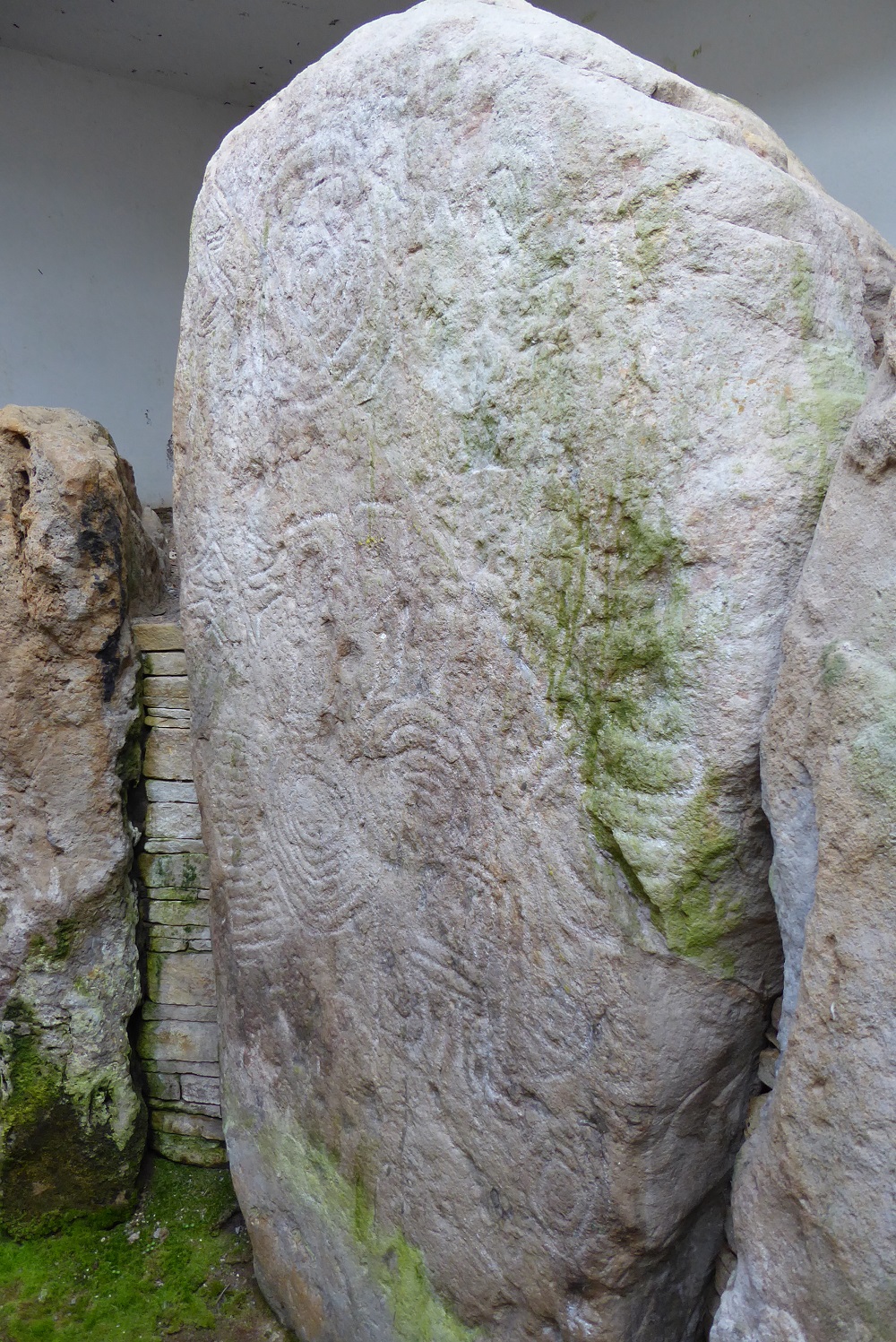Having failed to get the key once more (so close, so far!) I was going to visit Sess Kilgreen again when I passed the sign for Knockmany and decided to check it out anyway.
The forestry service guy told me to drive up until I reach the service car park nearer the top, so up I drove. And up. And then nearly drove into the side of the tomb! I didn’t realise it was possible to drive all the way up but the track is steep and not very solid so I would recommend the forest walk instead.
It was a clear, sunny day and the views were amazing, recent rain seemed to have cleared the haze. The enclosing bunker is hideous as lamented elsewhere, but the tomb inside is great, lots of bizarre and surprising carvings visible through the door and from the skylight.
By employing a few tricks (sticking camera on tripod through the bars and perching flash units up on the skylight) I was able to get some decent pics all the same.
Something should really be done about the interior of this monument, it makes the Fourknocks roof look like a work of artistic genius. Whats with the air vent to nowhere behind the backstone? At least painting the walls black would be a vast improvement.





















